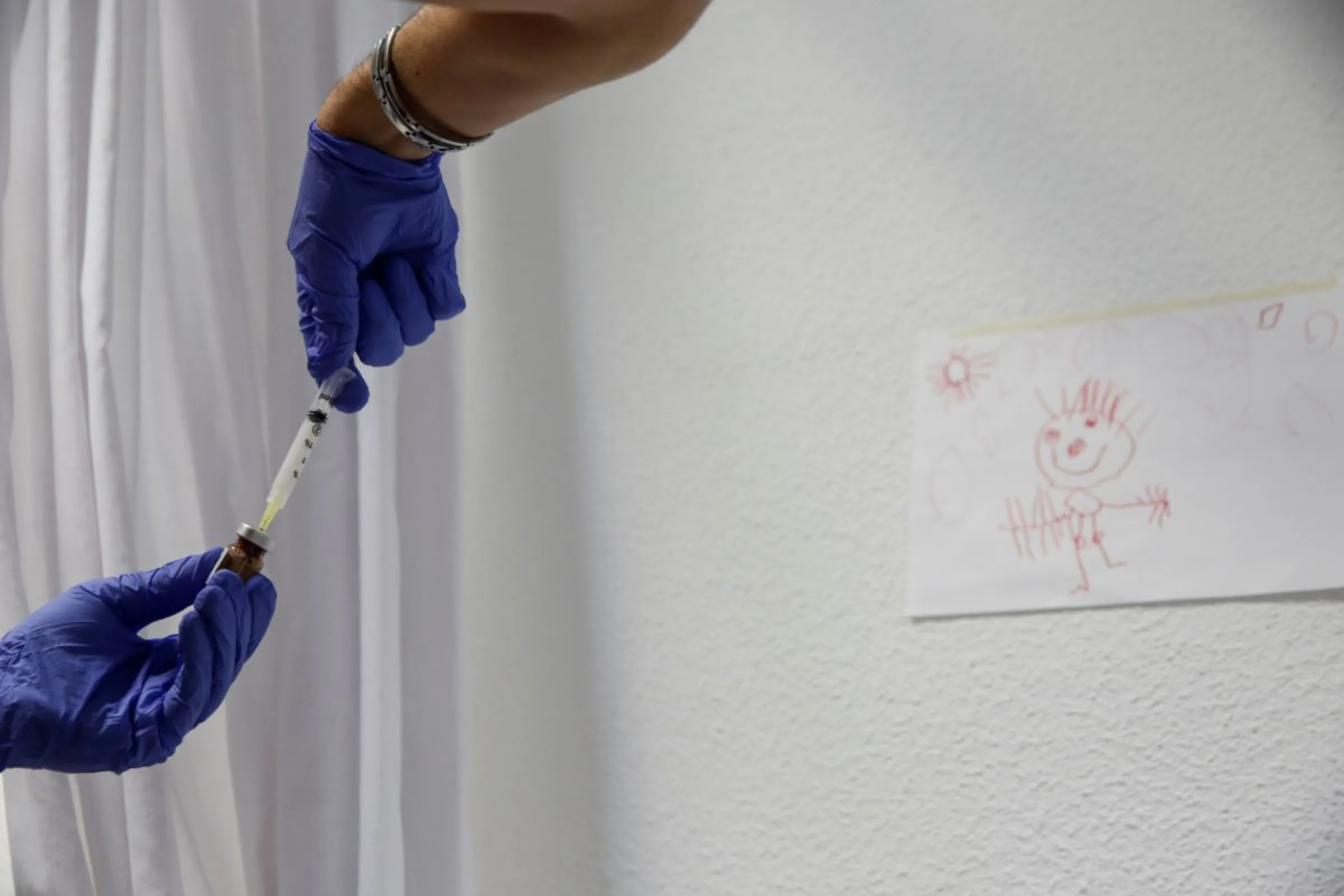What are puberty blockers and how are they used in trans care?

A nurse prepares a hormone blocker for transgender teenager in Madrid, Spain, December 16, 2015. REUTERS/Susana Vera
What’s the context?
Puberty blockers subject of fierce and polarised debate as Britain bans them for under 18s
- Doctors' union wants pause on UK puberty blockers ban
- New UK government to uphold ban for under 18s
- Youth gender care a flashpoint in trans rights debate
BRUSSELS/LONDON - Britain has announced an indefinite ban on puberty-blocking drugs, a contested treatment for children experiencing gender dysphoria, or discomfort over the sex they were assigned at birth.
The decision faces pushback from trans activists, while the British Medical Association (BMA) - the professional body for doctors - has called for the ban to be lifted.
As more adolescents identify as transgender around the world, parents, doctors and authorities are grappling with what treatment should be made available to them and at what age.
The use of puberty-blocking medication among minors has become a flashpoint in fierce and polarised debate about trans rights from the United States and Canada, to Spain and Britain.
In May, Britain's previous Conservative government introduced an emergency ban on prescriptions of puberty-blocking drugs to children suffering gender dysphoria.
Here's what you need to know.
What are puberty blockers?
Puberty-blocking drugs are used to halt the onset of puberty by suppressing the release of sex hormones testosterone and oestrogen.
Administered by injection or implants, they act as hormone-obstructing agents that hold back the onset of puberty, such as the growth of facial hair and testes or breast tissue growth and the onset of menstruation.
They are sometimes prescribed to young people with gender dysphoria to delay physical changes.
Puberty blockers are not to be confused with cross-sex hormone therapy - which aims to develop rather than suppress secondary sex characteristics to align with the patient's gender identity.
Who uses puberty blockers?
The drugs have been used for decades to treat precocious puberty, a rare condition in which a child's body matures early, usually before they turn eight. They have also been approved to treat prostate cancer and endometriosis.
More recently, doctors have prescribed puberty blockers for children experiencing gender dysphoria.
For young people who identify as trans, puberty blockers can be used to "buy time" so they can reflect on their options and can ease the stress of gender dysphoria, according to the World Professional Association for Transgender Health, a global body of doctors specialised in trans people.
A 2020 report by a team of doctors working in Boston in the United States found suicidal thoughts were less common in trans adults who had undergone puberty-suppressing treatments in their teen years.
The use of puberty blockers in adolescence can also prevent the need for future gender-affirming surgery, for example for trans men who can avoid mastectomies, or for trans women, Adam's apple reductions.
What is the criticism of puberty blockers?
A 2024 study by the American Physiology Society showed the effects of puberty blockers could be reversed if medication was stopped, but said more research was needed into their long-term effects.
Research from 2022 in the Journal of the Endocrine Society, which looked at several dozen children taking puberty blockers for less than two months, concluded that "later pubertal onset" as a result of puberty blockers "leads to lower adult bone mineral content".
The Provincial Health Services Authority, the publicly funded health service provider in the Canadian province of British Columbia, has found that the medication will temporarily delay growth in height and fertility.
Which European countries are restricting them and why?
England's National Health Service ended the routine provision of puberty blockers for children with gender dysphoria on April 1. Health and Social Care Secretary Wes Streeting extended the ban this month, saying there was "an unacceptable safety risk for children and young people".
Finland and Sweden's health bodies decided in 2020 and 2022 respectively to limit use of the drugs for trans minors except in rare cases, citing insufficient scientific basis for their use.
In Norway, a non-governmental health board called in 2023 for hormone treatments for trans children to be limited to research settings, but the country's health agency has not yet acted upon the advice.
Underscoring the issue's political dimension, French media reported in March that a group of conservative senators were calling for the use of puberty blockers to be banned in gender care for patients under-18 following research on the subject.
Curbs on access to the drugs have alarmed trans rights advocates and parents of trans children, who say limiting access to the medication could force them to seek costly private or unsupervised alternatives.
This article was updated on Dec 16th to include the UK government's indefinite ban on puberty blockers.
(Reporting by Joanna Gill in Brussels; additional reporting by Lucy Middleton in London; Editing by Clar Ni Chonghaile.)
Context is powered by the Thomson Reuters Foundation Newsroom.
Our Standards: Thomson Reuters Trust Principles
Tags
- LGBTQ+



















